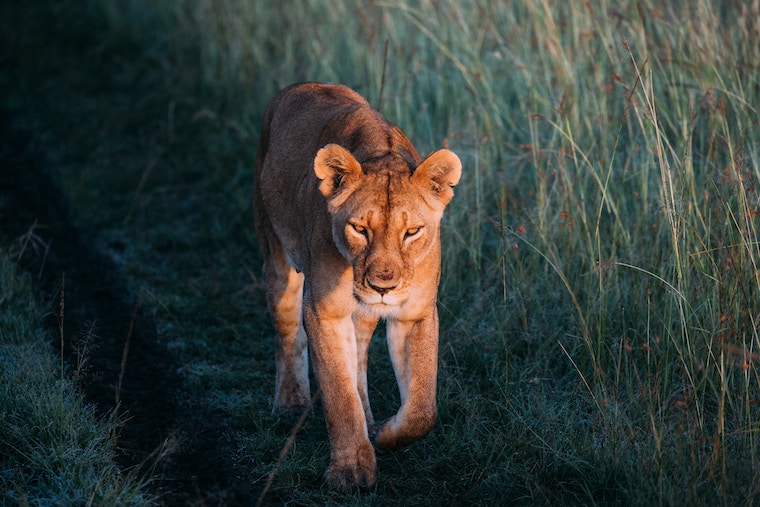One of the best things about Disney’s new live-action revamp of The Lion King is getting the chance to see stunning African landscapes in greater detail and feeling like you’re roaming alongside these awe-inspiring animals in their pride lands. If the movie inspired you to look into real-life safaris where you can witness these creatures in their natural habitats, here are a few African safari parks to add to your bucket list.

Madagascar – Isalo National Park
The Isalo National Park protects 815 square kilometers of gorges, canyons, and tiny stalagmite pinnacles that have been eroded by wind and rain into jagged landscapes that draw hikers from all over the world. This under-the-radar destination is home to few predators, but you’re likely to spot several species of lemurs during your stay. Bird watchers will have 80 species to look for and naturists will find rare forms of palms and aloes within the boundaries of this park. The park is open year-round and offers several natural pools and waterfalls for trekkers to wet their whistles.

Tanzania – Lake Manyara National Park
Another under-the-radar option for an African safari park is the Lake Manyara, which at 325 square kilometers is one of the continent’s smaller parks. Lake Manyara is home to an impressive bird population that includes flamingos and herons and boasts gorgeous views of rolling grasslands, groundwater forests, and algae hot springs. The park is home to the largest population of baboons in Africa and the only species of lions in the world that are known to climb trees. Other animals safari riders might encounter include elephants, giraffes, zebras, wildebeest, waterbucks, warthogs, and leopards.

Uganda – Bwindi Impenetrable National Park
The steep mountains of Bwindi Impenetrable National Park are a far cry from the flat plains of the Serengeti, but the park continues to attract tourists for its biologically diverse rainforests and impressive mountain gorilla population. Several habituated groups of gorillas can even be tracked when accompanied by a knowledgeable guide. The park is also home to 120 mammal species, 350 bird species and 220 butterfly species, along with many endangered amphibian and reptile species. The park is only accessible by foot, which deters many travelers.

Kenya – Lake Nakuru National Park
Kenya’s natural beauty is on full display at Lake Nakuru National Park, treating visitors to waterfalls, lush acacia forests, and dramatic cliffs along with lions, hippos, and the endangered Rothschild’s giraffe who graze at the edge of the flowing lake. It’s an ideal destination for bird lovers with over 400 species that fly within its protected acreage, including five globally threatened species. Lake Nakuru National Park is open year-round and adventurous visitors are invited to set up camp near the scenic Makalia waterfalls.

Zambia – Lower Zambezi National Park
The Lower Zambezi National Park encompasses a stretch of largely undeveloped wilderness along the northeastern base of the Zambezi river. Zimbabwe’s Mana Pool National Park lies at the opposite bank and together the two parks comprise one of Africa’s favorite wildlife destinations. Hop on a game tour and you’re bound to spot elephants, impala, leopards, lions, and hyenas. Animal diversity within this park is not as impressive as some of Africa’s other options, but safaris often have a greater chance of getting closer to the wildlife. The best time to visit is between May and October.

South Africa – Addo Elephant National Park
Home to 600 species of elephants, Addo Elephant National Park is aptly named and these majestic mammals are the main draw for most visitors to this park. Nestled in the Eastern Cape province of South Africa, Addo Elephant National Park is also known for its biodiversity and coastal conservation efforts. The park is split into separate areas depending on what tourists most want to explore. Some 400 species of birds can be found in the park along with buffaloes, leopards, lions, and rhinoceros. Visitors are advised to cool off at the watering hole to increase their chances of spotting an elephant.

Botswana – Chobe National Park
Chobe is Botswana’s first national park and offers visitors a truly authentic wilderness experience with unfenced camps that invite wildlife to roam amongst tourists. Holding the title of Botswana’s most biologically diverse park, Chobe is situated next to the Chobe River, which attracts large breeding herds of elephants, as well as giraffe families, sable, and cape African buffalo. The park is notable for having a population of lions that have been known to prey upon juvenile and occasionally adult elephants. Visit during the dry season (May through October) to increase your chances of spotting wildlife that includes rhinoceros, common warthog, kudu, impala, zebra, and wildebeest.

Namibia – Skeleton Coast National Park
Skeleton Coast National Park is an underrated escape for history and nature buffs. Stormy weather and unpredictable currents clash with the deserted landscape of northwestern Namibia, stranding wayward vessels and resulting in the world’s largest ship cemetery. Also found along this coast are the ominous skeletons of beached whales who were unsuccessful in fighting its ripping tides. The park’s rough seas and thick fog often deter visitors, but those who brave the elements will be rewarded with wildlife sightings that include desert-adapted elephants, rhinos, desert lions, brown hyenas, jackals, giraffes, seals, oryx, kudus, and zebras.
